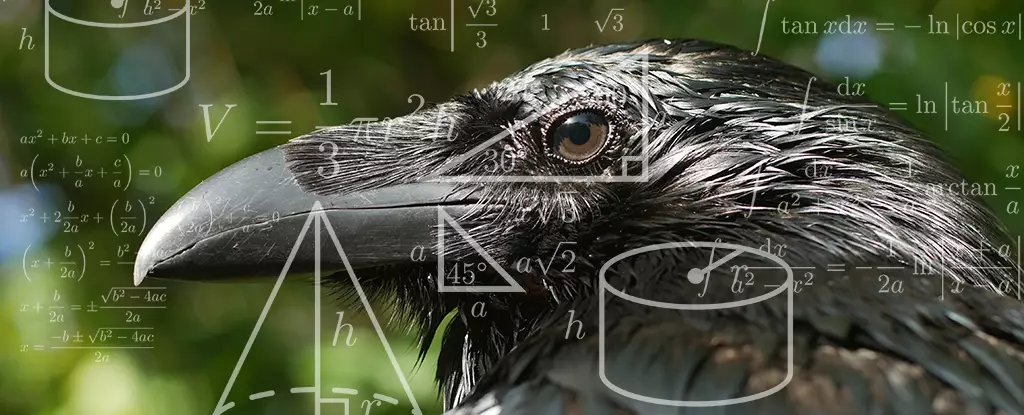Recent findings illuminate the impressive cognitive abilities of crows, demonstrating a geometric intuition that rivals human understanding. Traditionally, humans and our intricate grasp of mathematics have been viewed as the pinnacle of evolutionary achievement. However, this new research, showcasing crows as adept at discerning geometric patterns and detecting anomalies, challenges the very foundation of our belief in our intelligence’s uniqueness. It raises profound questions about intelligence itself—what does it mean to understand geometry, and how many layers of cognition exist in the natural world that we have yet to uncover?
The study conducted by animal physiologist Andreas Nieder and his team at the University of Tübingen discovered that crows could identify an outlier among various geometric shapes with remarkable accuracy. Such abilities were previously thought to be exclusive to humans and showcase not just the crows’ cognitive prowess but also the surprising depth of intelligence among animals. The significance of these findings extends beyond mere observation; they challenge and invigorate the scientific discourse around the cognitive abilities of non-human species.
The Evolutionary Implications
Nieder’s work suggests a cerebral thread connecting countless species, one that transcends the arbitrary boundaries traditionally drawn between humans and animals. If crows engage in geometric reasoning similarly to humans, what other cognitive functions are they performing that remain undiscovered? The implications here are profound, urging us to reassess our understanding of animal intellect and the evolutionary forces that facilitated its development.
Crows, for instance, have been shown to utilize geometric understanding for navigation and spatial awareness. This basic cognitive function provides them with an evolutionary advantage, suggesting that their perceptual capabilities have been naturally selected over generations. The distinction drawn between geometric regularities like squares and the more complex shapes illustrates a fundamental aspect of how animals interact with their surroundings, quite akin to the way we navigate our worlds. Both humans and crows find significance not in the mere appearance of shapes, but in their structural integrity, which plays a crucial role in the survival of each species.
Human-Centric Bias in Intelligence Evaluation
This new insight into crow intelligence compels a reflection on humanity’s self-constructed narratives surrounding intellect. The elevation of human cognition often leads to a dismissive attitude toward animal capabilities, but these findings disrupt such narratives. There is a danger in framing intelligence through a narrow lens, as it fosters an anthropocentric bias that overlooks the remarkable adaptations present in other species.
The tests conducted on the crows called into question long-held notions about cognitive learning. By measuring the birds’ innate ability to identify geometric inconsistencies without prior training, the research indicates that these capabilities are likely embedded in their biology. This challenges the view that complex intellectual tasks require extensive training, positioning crows within a context that recognizes intrinsic intelligence rather than merely learned behavior.
The Cognitive Symbiosis with Nature
The implications of this research extend beyond crows. It opens the door to appreciating the wide array of cognitive sophistications found throughout the animal kingdom. Their geometric intuitions might represent a basic survival mechanism, one evolved not merely for navigation but as an essential tool for survival across the animal spectrum. This insight encourages a broader appreciation of nature’s complexity, inviting an exploration of how other species might also exhibit cognitive traits we have yet to recognize.
Moreover, recognizing crows as intelligent beings capable of geometric reasoning fosters a more empathetic view of our cohabitants on this planet. As we better understand the nuances of animal intelligence, we are prompted to rethink our interactions with them and the environment. It becomes increasingly clear that acknowledging the sophistication of animal cognition is not merely a scholarly pursuit; it engenders a sense of responsibility in how we treat these creatures whose intelligences are woven deeply into the web of life.
The cognitive leap illustrated through the geometric capabilities of crows signals a pivotal shift in how we regard animals and affirms that intelligence, in its many forms, has been refined across species in ways that unify us all as part of an evolving ecosystem.

